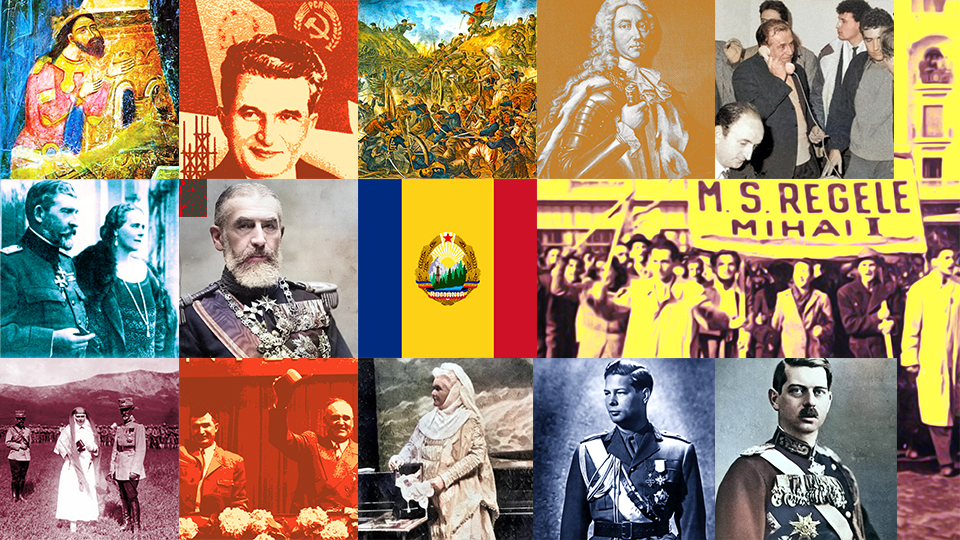Torturers in Communist Prisons
The Romanian press of late has started circulating a word with frightening associations: torturer.

Steliu Lambru, 22.07.2019, 14:00
The Romanian press of late has started circulating a word with frightening associations: torturer. This occurred as sentences were handed out for the last of the survivors among the torturers that were active in communist prisons in the 1950s, during the worst years of the Stalinist regime. The word has lately been used outside of its actual meaning, being used to brand all the people who manned the communist era prison and justice systems.
However, during the Stalinist era torturers were equally victims. Some of the detainees in communist prisons were innocent, and wanted to get away at all costs. Some of them chose to do so at the expense of their fellow inmates. This brings us to what has come to be known as the Pitesti Experiment, an extreme form of re-education inspired by Soviet theory and practices. It postulated that continuous torture would erase an individual’s personality, values, principles and education, rendering them open to new ones, in this case communist values. This idea started being applied in 1949 at the prison in Pitesti, with a view to being applied to society at large.
Radio Romania’s Oral History Center preserves interviews with some of the survivors of the re-education experiment in Pitesti. Former political prisoner Sorin Botez, recorded in 2001, still had a hard time talking about the Pitesti experiment, half a century later.
This is a very sad topic, and quite embarrassing. In spite of the fact that I am one of the few survivors who wasn’t among the so-called ‘fallen ones’ during re-education, and did not walk back on my honor or principles, knowing the blood curdling situation, I hesitate to blame the others. With the exception of the ones who did those things without being tortured, who did it simply because they were despicable people, or cowards. I detest them, and would like to see them pilloried. Which will never happen. However, we do have to make a clear distinction between the ones who succumbed to re-education, who were tortured beyond the brain’s ability to resist, because that was about the brain, not the body. They were different from the ones who committed those dastardly deeds because they were promised all sorts of things. Those were the real culprits. And many of them got what they deserved, because they were prosecuted and executed by the communists themselves. Unfortunately, not all of them.
We often picture evil as having a certain face, a face for everyone to see and show it as it is, but that is not the case. Aristide Lefa met the most famous torturer of Pitesti, Eugen Turcanu, and in 2000 he recalled the last time he met him:
Turcanu was a kind of manager, even the commanding officer of the prison was afraid of him, he roamed freely through the jail, he had the keys, with the approval of the Ministry of the Interior. The commanding officer, Dumitrescu, was working with him out of fear. Turcanu was strolling all around the prison, he dealt with all the details, he was organizing the beatings, moved people around, after the re-education started. The night I left the prison, there were about 50 people going out, but only 18 made it. We had walked to the railway station. We were waiting there, and Turcanu showed up, he was coming from the commander’s office, I can still picture him, he was congested, red in the face, he was emotional or furious, I couldn’t tell. He glanced over the group, and he was probably telling himself: ‘These are the ones that got away from me’. And he left. That was the last time I saw Turcanu.
Ion Fuica, recorded in 2000, recalled the appalling scenes of torture staged by Turcanu:
The worst of the torturers were taking us to room 4, the infirmary, Turcanu’s dwelling. He was sitting at a table, next to a wood stove, which made the room smell homey. That was the place where they had the so-called ‘unmaskings’, they had stacks of papers and pencils. They made you write. The second or third day Turcanu would show up and say: You call this unmasking? You won’t confess what you did?’ That is when the beating would start. It wasn’t just beatings, I actually saw with my own eyes a man drinking his own urine. I want to say that I saw that with my own eyes, these are not just stories.
Without these testimonies and sources, most people would think that these torturers were figments of the imagination. Unfortunately, the historical realities go way beyond fiction.






























